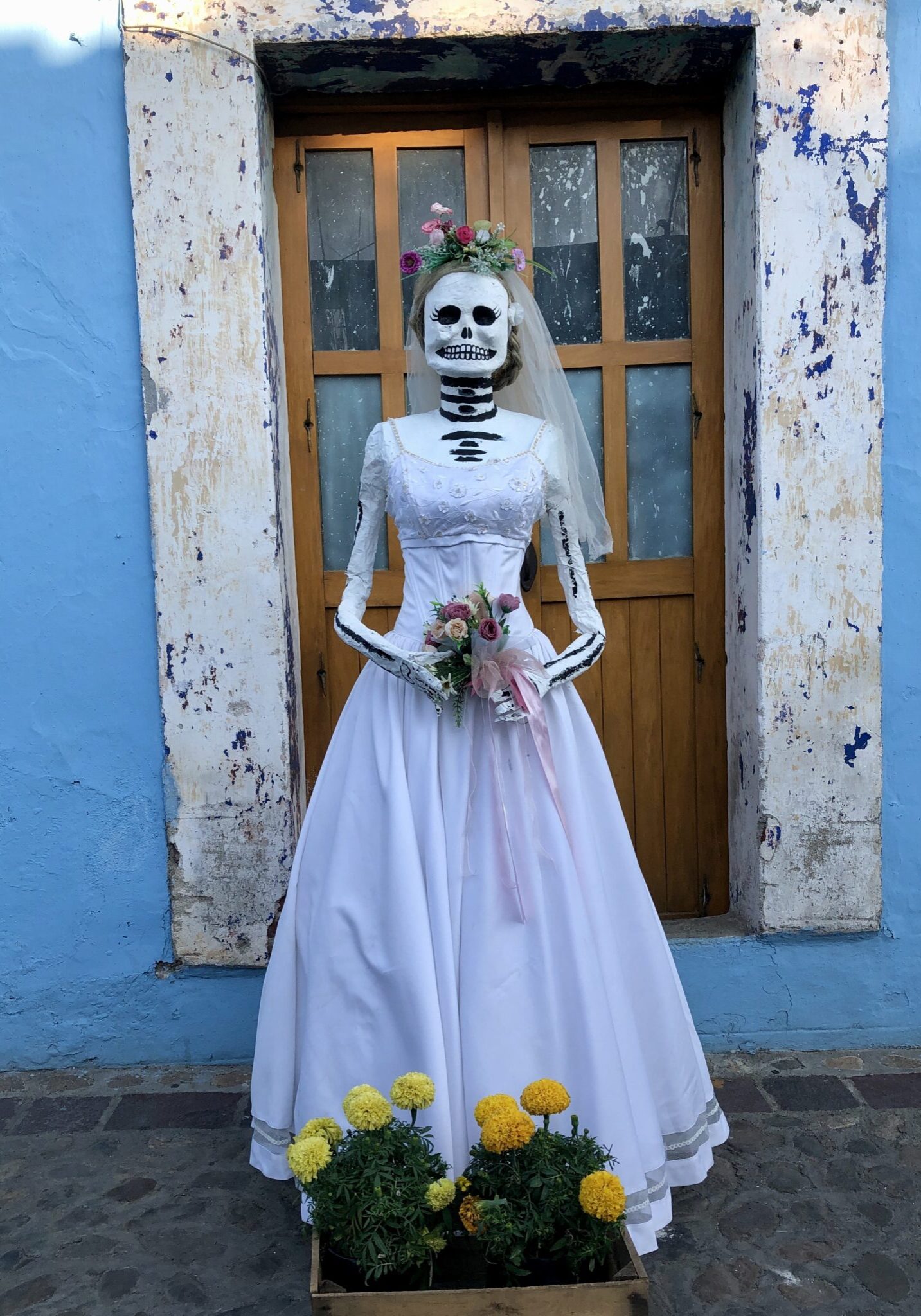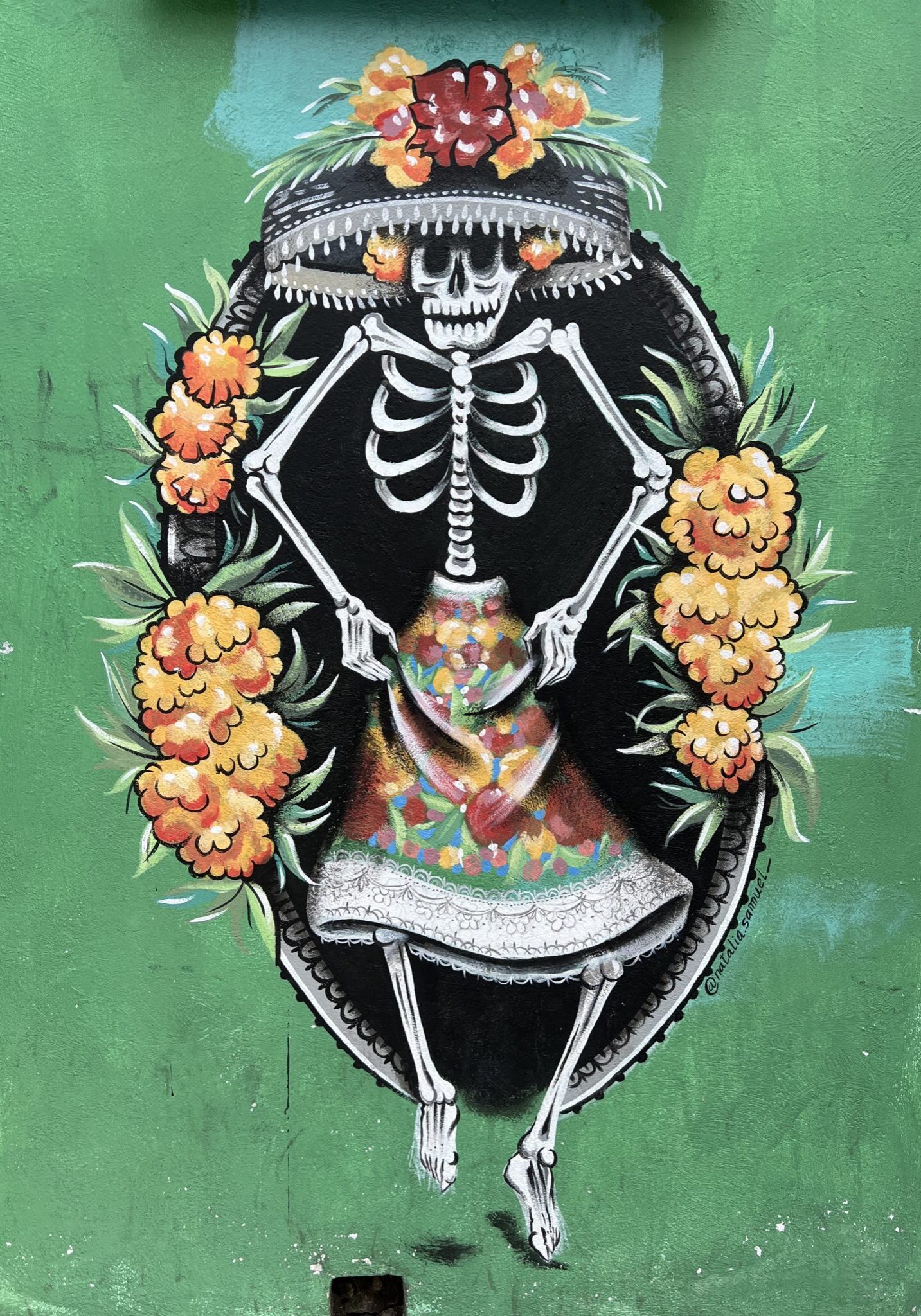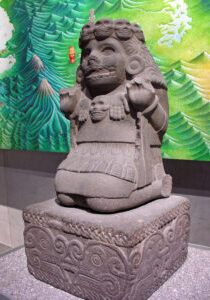

SIX QUESTIONS FOR LA CALAVERA CATRINA, THIS MONTH'S MEXICANISTA
With Dia de los Muertos just around the corner, Mexicanista reached out to a woman who needs no introduction, the holiday’s most famous celebrity. Would La Catrina give an interview to answer questions inquiring readers want to know?
“Of course not, she’s busy!” Her assistant snapped. “She’s being fitted for her new bonnet.”
But after our persistent pestering, La Catrina granted Mexicanista five minutes of time. Provided we bring a dozen sweet pink tamales with cinnamon and dried cherries, and several dozen bouquets of Cempasúchil, the fragrant yellow marigold flower that she surrounds herself with wherever she goes.
We found La Catrina in a tomb at Oaxaca City's Panteón General, among a clique of other calaveras, busy pinning feathers to her oversized purple bonnet. Catrina opened the bag and inhaled the sweet pink tamales.
“I can’t eat fast enough,” she exclaimed. “Being only bones means I eat as many tamales as possible and they fall right through me. Jajaja!" With her toothy grin and a snort, she added, “Ask your questions quick. I’m bone tired from all the hoopla. I have so many appearances to make this coming week.”
Mexicanista: According to our research, two male Mexican artists, Jose Guadalupe Posada and Diego Rivera, created your likeness early in the 20th century. (See sidebar for background.) Before that, you didn’t exist.
La Catrina: Hola Chicas, were you born yesterday? Do you believe everything you read? Ridícula! No one invented me with their pencils and paints. I am part of every woman who has ever lived. I am in the dirt. The soil. Wind and rain. My spirit flies free and I choose when I’ll enter an imagination. Strike as inspiration. I created myself with their lead and pigments. Ha!
M: Didn't you get your start as Mictecacihuatl, born of Aztec mythology, Aztec Queen of the Underworld?
C: Start and stop? What funny ideas humans have. I am still the courageous Mictecacihuatl, Lady of the Dead, My job is still to watch over the bones of the dead and preside over ancient festivals of death. I still ensure the preservation of ancestral connections and guide souls to realms beyond. I just dress differently now. A style makeover is a good idea to stay fresh.

Mexicanista: As you are so well acquainted with death, perhaps you have an insight into Why we are here?
Catrina: To live, to die, to laugh, of course. To dress up and smell the flowers. Also to love your family and ancestors.
Mexicanista: What is your motto that you live and die by?
Catrina: Bones, bones, we are all bones. I love style, as you can see. But beneath our luxurious clothes; beneath our naked skin, we are all the same. Made of bones. When death comes for each of us we all leave as equals.
Mexicanista: What's your super power?
Catrina: My sense of humor of course! Nothing ever gets under my skin. It tickles my funny bone to always laugh at death. Poor Death gets annoyed but we Mexicans are famous for laughing in his face. It’s such a great quality.
Mexicanista: Since our time is limited, we mere mortals must ask, What’s it really like on the other side?
Catrina: Chicas, it’s divine. To be surrounded by every ancestor you’ve ever had. Every dog and cat. We just dance and laugh for all of eternity.

Sidebar: History of La Catrina
Ls Catrina was born into the Mexican psyche when Mexican illustrator Jose Guadalupe Posada made an original sketch of La Calavera Catrina around 1910. La Calavera Garbancera was a social criticism, a satire referencing the high-society European obsessions of the Mexican president Porfirio Diaz, whose corruption led to the Mexican Revolution of 1911. Catrina was a nickname for an elegant, upper-class woman who dressed in European clothing, maybe denying her own indigenous or Mexican roots.
Mexican muralist and artist Diego Rivera gave La Catrina a full body in his 1947 mural, I dream of a Sunday afternoon in the Alameda Central. Being front and center in that Surrealist tableaux of Mexican history really popularized her image.
Over time, La Catrina became associated with Dia de las Muertos and is ubiquitous in cemeteries, within ofrendas, and all manner of remembrances for departed loved ones.
Images of La Catrinas are public displays taken in and around Oaxaca City, Mexico. We thank all artists for their contributions.
